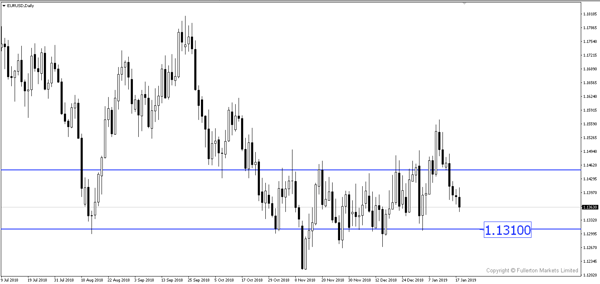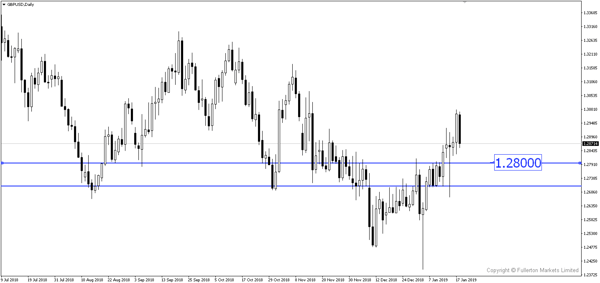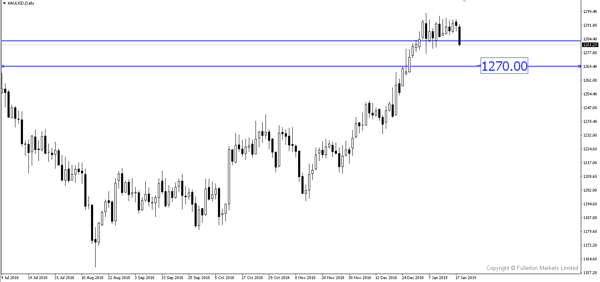Brexit outlook remains dark at this moment, sell GBP/USD?
Risk of not being able to reach a deal is rising now
Prime Minister Theresa May won the vote of confidence in her government last week which was widely expected. However, now she needs to secure a Brexit deal before the March 29 deadline.
A deal would require May to cross one of her negotiation red lines, to alienate her Eurosceptic colleagues and win support from opposition Labour Party lawmakers, which is no easy task. If she cannot deliver, Brexit will be delayed, and this will possibly result in a second referendum.
Our base case is that May should manage to secure cross-party support for a customs union arrangement with the EU, to allow the UK to exit in April. However, other scenarios remain on the table. If May cannot break the deadlock in Parliament, even after extending Article 50, a second referendum will come into view. In our base case, we expect economic growth to rebound on news of a deal. A delay would mean uncertainty could persist longer than expected, weighing on activity. Our potential growth forecast continues to be underpinned by a judgment that the UK will end up in a customs union.
The extent of the parliamentary defeat on January 15 for May’s deal makes a change of tack from the Prime Minister in the coming days almost certain. She has already indicated a willingness to work across Parliament to find a compromise. We believe she is likely to find the most support for permanent membership of the customs union as the blueprint for future trading relationships.
For May, the approach would mean sacrificing the ability to follow an independent trade policy, which is currently one of her red lines. Nonetheless, she would be able to argue that she has ended free movement since the UK would have left the single market and delivered on the 2016 referendum result. But the current situation clouds the outlook for now.
Even before the defeat of May’s deal, there were mumblings that the Article 50 deadline may have to be extended in order to get all the relevant legislation through Parliament. The EU has indicated a short extension is possible. We have set out the potential economic costs of delaying Article 50 here.
Perhaps the biggest risk from taking the customs union approach is that she will alienate the Eurosceptic wing of her party. Many of her colleagues see an independent trade policy as the biggest benefit of Brexit and permanent membership of the customs union would prevent that. In response to the shift in stance, they could choose to withdraw support for the government which would lead to an election soon after the UK leaves. Or before that, they could decide to side with Labour in another no confidence vote.
Labour party might not be agreeable to this as May has already indicated that she will reach out to rank-and-file Labour lawmakers. So, getting a cross-party consensus will require moderate Labour lawmakers to side with her. Labour MPs may decide that they prefer party unity as Corbyn attempts to force a general election.
Northern Ireland’s Democratic Unionist Party (DUP), which props up May’s minority government, has said that they will not support any Brexit policy that creates a regulatory or customs border in the Irish Sea. However, if the EU still demands that the border in Ireland remains frictionless, the red line would be broken. That is the issue the DUP has with the so-called Irish backstop. If it sees that coming, it may choose to withdraw support for the government or side with Labour in a no confidence vote.
One of the rare pieces of good news in recent weeks is that the chances of no deal have fallen drastically as Parliament has demonstrated that it is willing to stop a chaotic exit. Betting odds show the chances of no deal at about 10%, down from about 50% in November. We think the move in the odds look about right. What’s more, it looks like the EU is considering the possibility of a longer extension to Article 50 to thrash out a deal. This suggests that the bloc is also keen to avoid a no deal.
However, extending the deadline may still not be enough for the warring factions to agree on a deal, allowing for more extreme options to move into view. A general election is possible though it is unclear how it would solve the deadlock in Parliament. The polls are extremely tight and there is a good chance the vote would deliver another coalition plagued by the same problems that May has faced.
A more likely way past the deadlock would be a second referendum. There is support for the idea among lawmakers, albeit not a current majority, because it is seen by many including May as a betrayal of the 2016 vote. An election won on a campaign for a second referendum could, however lend it some democratic legitimacy. It is also unclear what question would be asked and the result it would return; most who want another referendum want to remain in the EU. That said, if a customs union deal proves impossible to deliver, it may end up being the only way out of the impasse.
Our Picks
EUR/USD – Slightly bearish.
This pair may fall towards the 1.1310 price level if the ECB is dovish due to weaker data last week.

GBP/USD – Slightly bearish
With no near-term deal in sight, this pair could continue to be pressured lower.

XAU/USD (Gold) – Slightly bearish
We expect price to fall towards 1270 this week.

Fullerton Markets Research Team
Your Committed Trading Partner












